Are you tired of constantly picking up toys off the floor? Do you feel like your child has too many toys and doesn’t play with half of them? If so, a great solution for you may be to rotate toys.
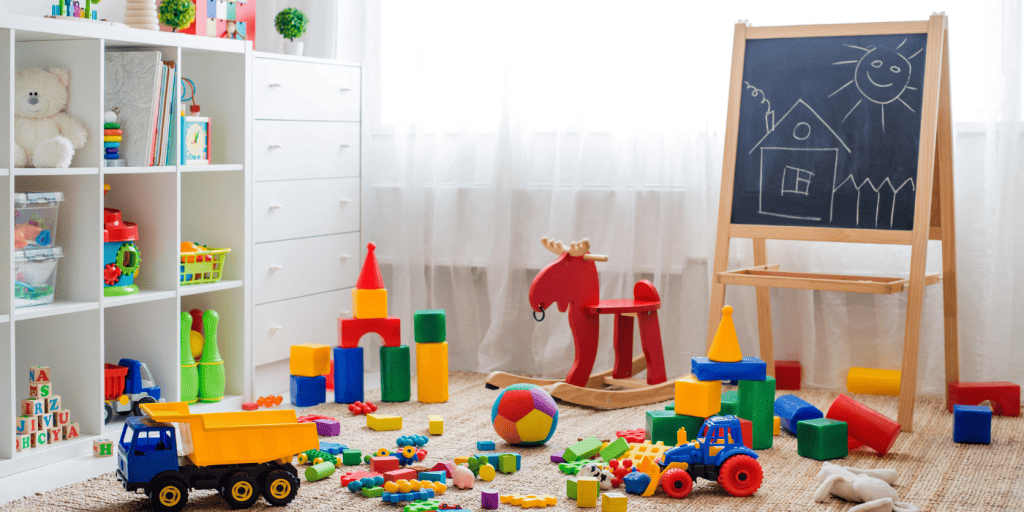
Toy rotation is a simple strategy that involves dividing your child’s toys into groups and only allowing access to one group at a time. This helps to keep the toys fresh and interesting, while also reducing clutter and promoting deeper concentration and creativity in your child.
By rotating toys, you can also save money by not constantly buying new toys and instead making the most out of the ones you already have.
Key Takeaways
Toy rotation is a simple solution to managing toy clutter and promoting deeper concentration and creativity in your child.
By dividing toys into groups and only allowing access to one group at a time, you can keep toys fresh and interesting while reducing clutter.
Toy rotation can also save you money by making the most out of the toys you already have.
The Problem with Too Many Toys
If you’re a parent, you’ve probably experienced the frustration of toy clutter. Toys are often scattered around the house, cluttering up your living space and making it difficult to keep things organized. This can lead to feelings of being overwhelmed and stressed out, which is not good for anyone.
But it’s not just about the mess. Too many toys can also be overwhelming for your child. When there are too many toys to choose from, it can be hard for children to focus on one thing and really engage with it. This can lead to toy overwhelm, where your child is so overstimulated by how many toys and all the options that they don’t know where to start.
Research has shown that having too many toys can actually hinder your child’s development. According to an article on ABC News, having too many toys around the kids’ house can make it difficult for children to concentrate, learn, and develop important skills around play.
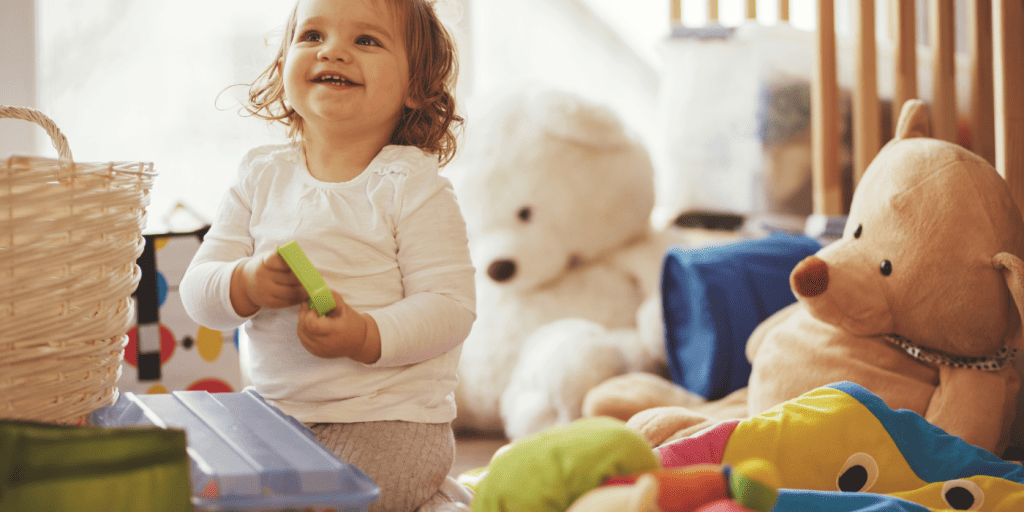
In short- the more toys there are, the more confusing it can be for kids to figure out what to do with them.
So, what’s the solution? One strategy that many parents have found helpful is toy rotation. This involves dividing your child’s toys into groups and only allowing them access to the one toy group at a time. Then, you switch (or rotate) the toys to keep things fresh and interesting. By doing this, you can help reduce toy clutter and overwhelm, while also promoting your child’s development through play.
In the next section, we’ll take a closer look at how toy rotation works and how you can implement it in your own home.
What Are the Signs of Toy Overwhelm?
Signs of toy overwhelm in children can manifest in various ways, and they may exhibit behaviors that indicate they are struggling with the abundance of toys. Some common signs of toy overwhelm include:
Lack of Focus: Children may have difficulty concentrating on one toy or activity for an extended period. They might jump from one toy to another quickly without fully engaging with any of them.
Frustration: When presented with numerous choices, children might become frustrated when they can’t decide which toy to play with. This frustration can lead to mood swings and tantrums.
Disorganization: Toys may be scattered all over the play area, making it challenging for the child to find and engage with specific items. This disarray can contribute to a sense of chaos.
Apathy: Children overwhelmed by toys might exhibit a lack of interest in play altogether. They may seem uninterested, bored, or disengaged, even when surrounded by toys.
Shortened Play Sessions: Instead of immersing themselves in extended play sessions, children may only engage briefly with each toy before moving on to the next. This prevents them from fully exploring the benefits of each toy.
Difficulty Cleaning Up: When faced with an excess of toys, children might struggle to clean up after playtime. This can lead to a messy and cluttered play environment, adding to their feelings of overwhelm.
Unexplored Toys: Overwhelm can result in children not fully exploring or using many of their toys. Some toys may remain untouched or underused, preventing them from getting the intended educational and developmental benefits.
Inability to Create: A surplus of toys can hinder a child’s creativity. They may rely on the features and functions of the toys rather than using their imagination to invent new games and scenarios.
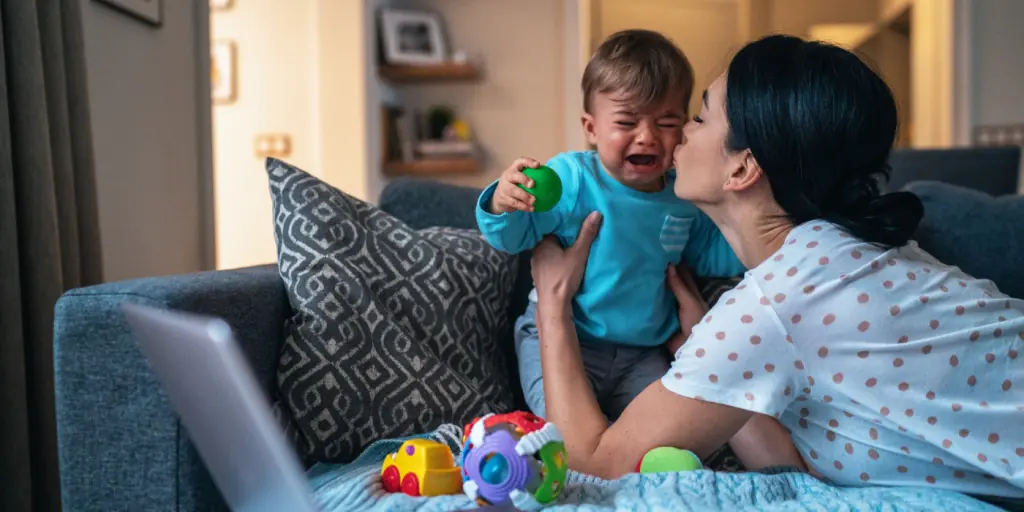
Recognizing these signs can help parents and caregivers address toy overwhelm by implementing strategies such as toy rotation, decluttering, and providing a more structured play environment that encourages meaningful engagement and learning.
Benefits of Rotating Toys
As a parent, you want your child to have the best experience while playing with their toys. However, too many toys can lead to clutter, stress, and overwhelm.
That’s where toy rotation comes in. Rotating toys has a slew of benefits that can help your child develop important skills and reduce stress for both you and your child. Here are some of the benefits of rotating toys:
Boosting Creativity
Rotating toys can boost your child’s creativity by encouraging them to think outside the box. When your child is presented with a limited number of toys, they are forced to use their imagination to create new games and scenarios.
This type of creative play can help your child develop problem-solving skills and enhance their creativity.
Enhancing Focus
Having too many toys can lead to overstimulation, which can make it difficult for your child to focus on one thing.
By rotating toys, you can reduce the number of toys available at any one time, which can help your child focus on the toys they have. This type of focused play can help your child develop their attention span and concentration skills.
Promoting Independent Play
Rotating toys can also promote independent play. When your child has fewer toys available, they are forced to play independently and use their imagination to create their own games. This type of imaginative play can help your child develop their independence and self-confidence.
In summary, rotating toys can provide a range of benefits for your child, including boosting creativity, enhancing focus, and promoting independent play. By reducing the number of toys available at any one time, you can help your child develop important skills and reduce stress and overwhelm.
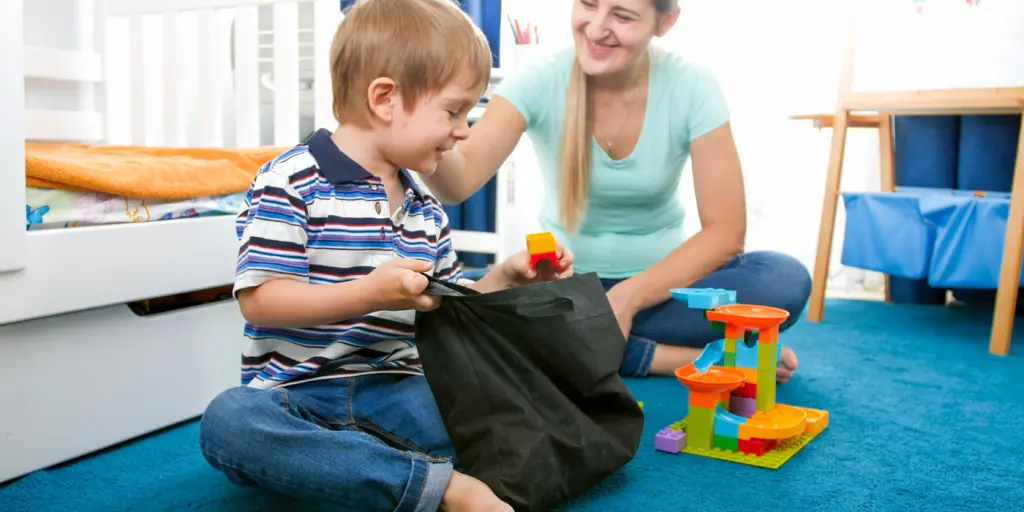
How to Implement a Toy Rotation System
If you want to implement a toy rotation storage system, there are a few steps you can follow to make it easy and effective. Here are some tips to help you get started.
Observation and Assessment
Before you start rotating toys, it’s important to observe and assess your child’s play habits. Take note of which toys they play with the most and which ones they ignore. This will help you determine which toys to keep out of rotation toys, and which ones to rotate.
Categorizing Toys
Once you’ve observed your child’s play habits, it’s time to categorize their toys. Group similar toys together, such as all stuffed animals, the dolls or all the building blocks. This will make it easier to rotate toys and keep track of what you have.
Scheduling the Rotation
Decide how often you want to rotate toys. Some families rotate toys weekly, while others do it every few weeks. Choose a day to do the toy rotation categories on, such as “Toy Rotation Day” on Saturdays. Set a reminder on your calendar so you don’t forget.
Maintaining the System
To maintain the toy rotation system, make sure to declutter and clean up regularly. Get rid of any broken or unused toys and put away other toys that are not in use. When it’s time to rotate toys, swap out the current toys with the ones in storage.
By following these steps, you can implement a toy rotation system that keeps your child engaged and interested in their toys. Remember to observe your child’s play habits, categorize the rotation toys, schedule the rotation, and maintain the system for best results.
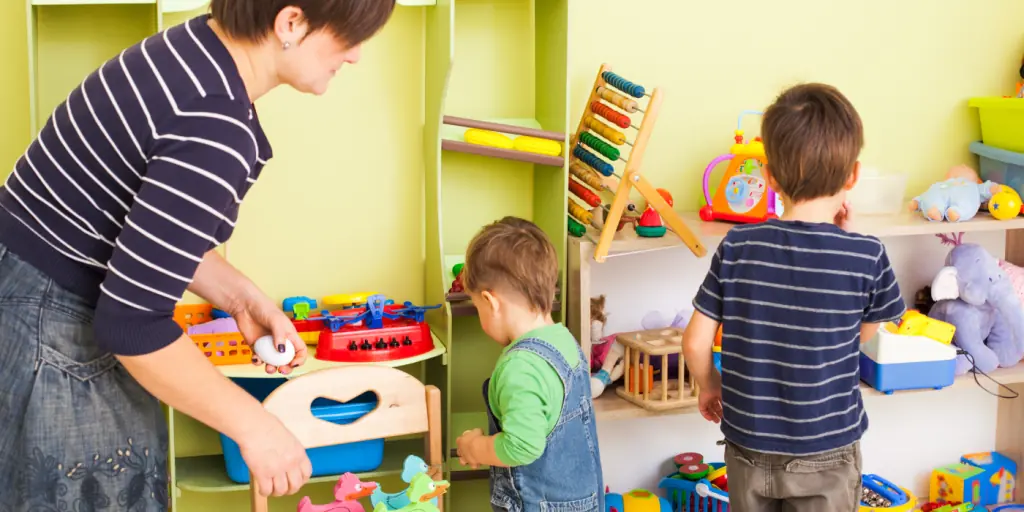
Managing Toy Clutter
Do you often find yourself stepping on your kids toys, or tripping over them? Are you tired of the mess and clutter in your home? If so, it’s time to take control of the situation and declutter your child’s toys.
Top pick

XL Storage Bin with 16 Bins
This budget friendly storage unit has 16 storage bins, perfect for safely storing away sets
Best Value

XXXL Storage Basket
If you’re on a budget, this massive storage basket is a quick and easy solution for stashing away out of rotation toys.
Essentials for Beginners

20 piece Mesh Zipper Pouches
These handy pouches are perfect for storing toys in if you are short of space.
Reducing toy clutter not only makes your home look neater and cleaner, but it can also help your child focus and play better. Plus, it can save you time and stress when it comes to cleaning up.
One effective method for managing toy clutter is to rotate toys. Instead of having all of your child’s toys out at once, choose a fixed number of toys to keep out and put the rest away in a toy box or storage container.
Then, after a week or two, switch out all the toys. This method keeps the toys fresh and exciting for your child, and it also helps to reduce clutter.
When selecting which toys to keep out, consider your child’s interests and age. You want to provide a variety of toys that will stimulate their imagination and creativity.
Don’t be afraid to get rid of old toys or random toys that your child has outgrown or no longer plays with. You can donate or sell them to make room for new toys that your child will enjoy.
Another tip for managing toy clutter is to have a designated play area. This can be a playroom, a corner of a room, or even a section of the living room.
By having a specific area for play, it helps to contain the mess and makes it easier to clean up. Plus, it gives your child a sense of ownership and responsibility over their toys and play area.
In addition to rotating toys and having a designated play area, you can also use storage solutions to store toys and reduce clutter.
Toy boxes, clear plastic bins, and shelves are all great options for keeping toys organized and out of the way. You can even label the bins or shelves to make it easier for your child to find and put away their toys.
Overall, managing toy clutter doesn’t have to be overwhelming. By rotating toys, having a designated play area, and using various toy storage solutions, you can reduce clutter and create a more organized and enjoyable play environment for your child.
FAQS
Why is it important to rotate toys for young children?
Rotating toys helps prevent boredom and keeps children engaged by offering them a variety of play experiences. It encourages creativity, problem-solving, and cognitive development as children explore different toys.
How often should I rotate my child’s toys?
While there’s no strict rule, experts recommend rotating toys every few weeks to a month. This timeframe allows children to fully explore and engage with a set of toys before introducing new ones, promoting sustained interest.
What are the benefits of rotating toys for a child’s development?
Rotating toys exposes children to various textures, colors, shapes, and functionalities, which enhances their sensory and motor skills development.
Looking at the same toys every day can leave your child feeling uninspired, plus sometimes there are so many toys in the room that your little one can’t really pay attention to everything in front of them- so it helps to put some toys out of sight for a while.
It also promotes focus, attention span, and emotional regulation as children learn to adapt to different play scenarios.
Can rotating toys help reduce clutter and save space?
Yes, rotating toys can help manage clutter and maintain a cleaner play environment. By having a set of a few toys out at a time, you can keep the rest stored away, making clean up easier and maximizing space in your home.
How many toys is too many toys?
That’s really a decision down to each family!
We do recommend putting away a few toys for a few weeks before bringing them out again- if you find that your child is suddenly more interested, it would suggest that there’s a little too much going on for them to be able to focus.
What is Toy Overwhelm?
Toy overwhelm refers to a situation where a child is exposed to an excessive number of toys, often leading to feelings of confusion, distraction, and difficulty in engaging with play.
This term is commonly used to describe the negative effects of having too many toys available to a child at once. Instead of promoting creativity and focused play, a cluttered environment with an overwhelming array of toys can actually hinder a child’s ability to fully enjoy and benefit from their playtime.
Toy overwhelm can result in decreased attention span, increased frustration, and a lack of meaningful engagement with individual toys.
To address toy overwhelm, parents and caregivers often employ strategies like toy rotation and decluttering to create a more intentional and engaging play environment for children.





